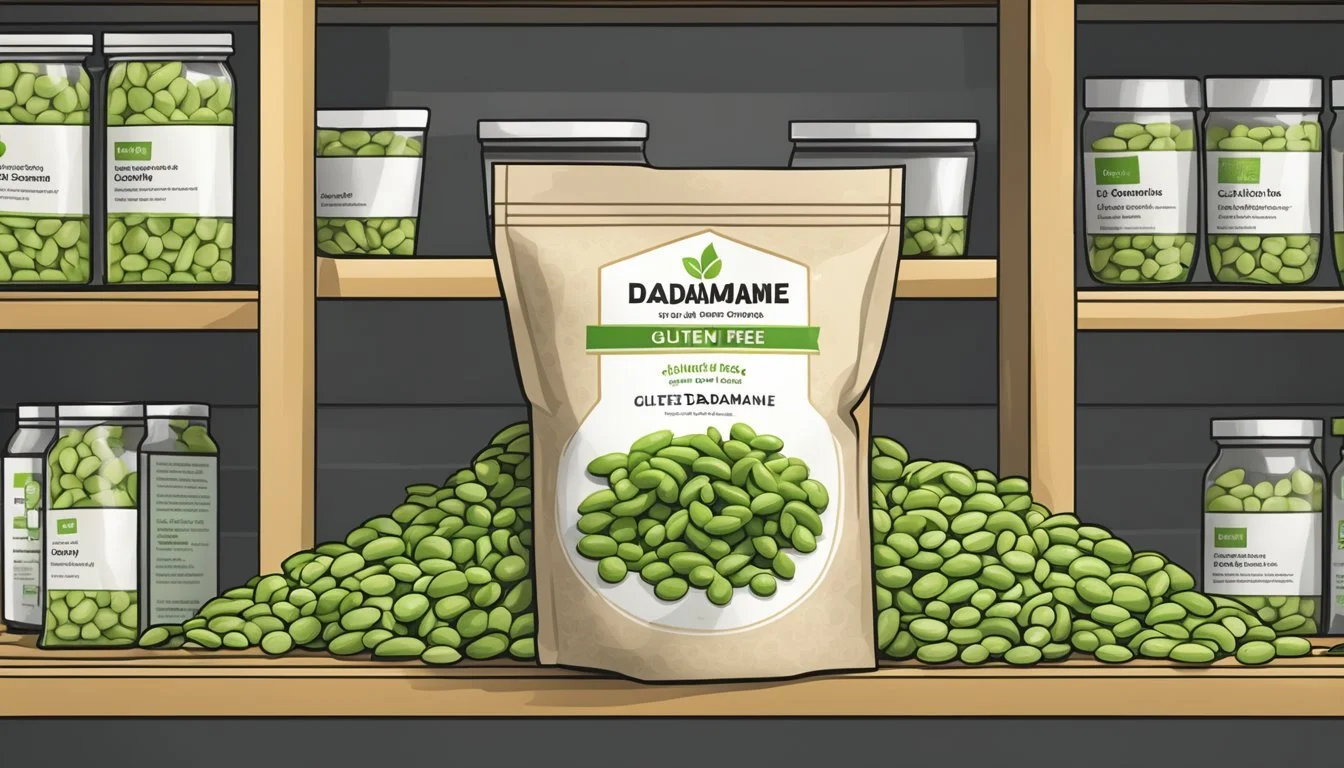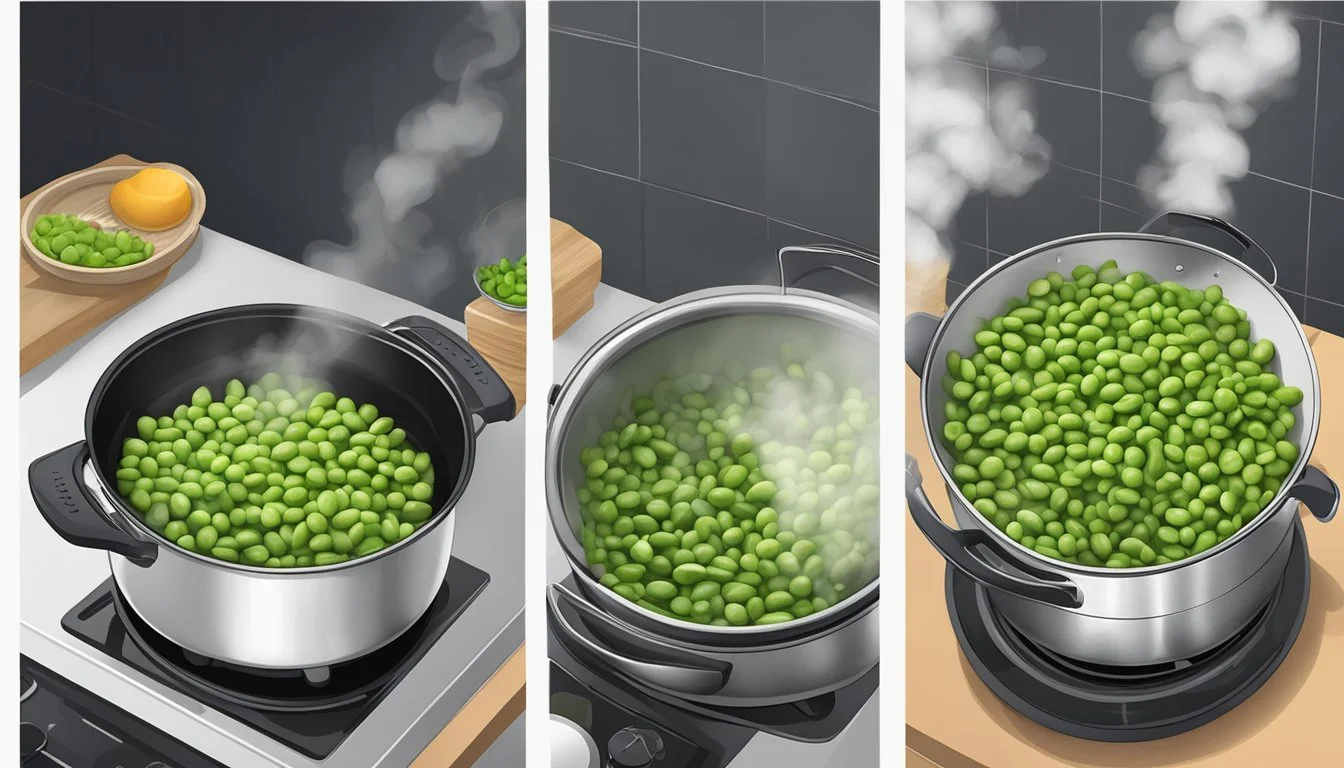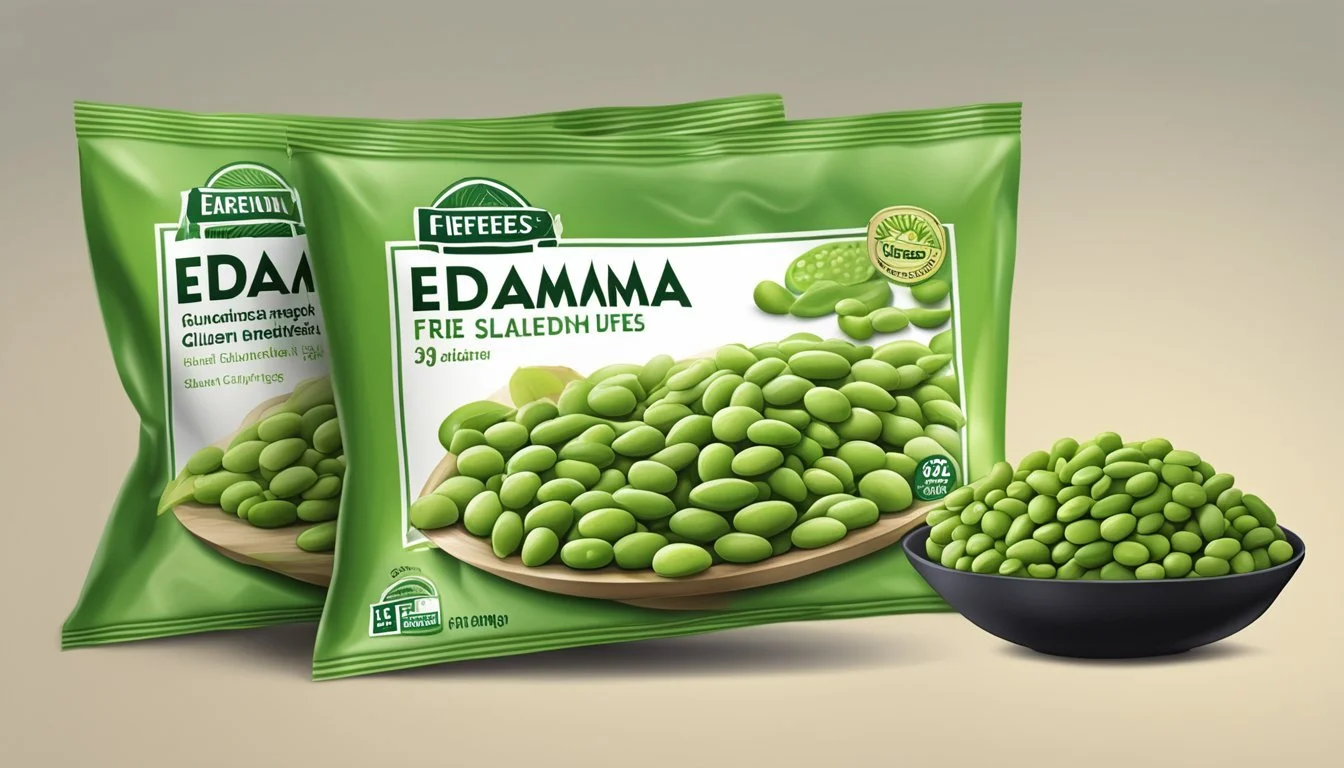How Long Does Gluten-Free Edamame Last?
Shelf Life and Storage Tips
Edamame, a nutritious and versatile snack, has become increasingly popular among health-conscious individuals, particularly those adhering to a gluten-free diet. Not only is it packed with protein, iron, and calcium, it is also naturally gluten-free. Understanding how to store edamame properly is crucial to extending its shelf life and ensuring it remains safe to eat.
Fresh edamame pods can typically last up to three days in the refrigerator after cooking. For those who prefer their edamame roasted, the shelf life in the fridge is approximately 4 to 5 days if stored in an airtight container to prevent moisture and contamination.
Frozen edamame offers a longer storage solution. Kept in the freezer, it can last several months without significant loss of quality or nutritional value. When ready to enjoy, simply defrost and eat or cook to your preference. Knowing these storage tips helps you make the most out of this gluten-free powerhouse while keeping it fresh and delicious.
Understanding Edamame
Edamame is a nutrient-rich legume enjoyed globally for its health benefits. From its impressive nutritional profile to its gluten-free attributes, edamame is a versatile ingredient in various diets. Fresh and frozen forms offer different storage potentials and usage scenarios.
Nutritional Profile of Edamame
Edamame boasts a rich nutritional profile, making it a valuable addition to any healthy diet. It is a plant-based protein source, offering approximately 11 grams of protein per 100 grams. This makes it an excellent choice for vegetarians and vegans seeking to meet their daily protein requirements.
Additionally, edamame is high in fiber, aiding digestion and promoting gut health. It contains a range of essential vitamins and minerals such as iron, calcium, and folate. This legume also offers a spectrum of amino acids and antioxidants, contributing to overall health and well-being.
Gluten-Free Benefits
Edamame is naturally gluten-free, making it a safe and nutritious option for individuals with celiac disease or gluten sensitivity. Unlike many processed gluten-free foods, edamame is whole and unprocessed, ensuring that it retains its full spectrum of nutrients.
Being a gluten-free food, edamame can be effortlessly incorporated into various gluten-free recipes. It provides a substantial protein boost without the worry of gluten contamination, which is crucial for maintaining a balanced diet without compromising health.
Differences Between Fresh and Frozen Edamame
Fresh edamame is typically sold in the pod and must be refrigerated to maintain its freshness. It can last up to two weeks in the fridge if kept in an airtight container. Fresh edamame should be consumed within a few days to enjoy the best quality.
Frozen edamame, on the other hand, is pre-cooked and available either shelled or in the pod. It can be stored in the freezer for up to 12 months, retaining its flavor and nutrients. This makes frozen edamame highly convenient, allowing for quick preparation while ensuring a long shelf life.
Both fresh and frozen forms offer nutritional benefits, but their storage and usage vary considerably, allowing consumers to choose according to their needs.
Proper Storage Methods
Proper storage techniques are crucial to maximize the shelf life of gluten-free edamame. The key factors include maintaining optimal temperature, using airtight containers, and choosing the right storage location.
Storing Fresh Edamame
Fresh edamame should be stored in a cool, dark place if it will be consumed within two to three days. For longer storage, placing fresh edamame in a refrigerator is advisable.
Temperature is critical; keep it below 40°F (4°C). Utilize the vegetable crisper drawer or the coldest part of the refrigerator. To prevent moisture loss and spoilage, use a perforated plastic bag. Checking periodically for signs of spoilage, such as off smells or sliminess, can help ensure it's still good to eat.
Freezing Edamame
Edamame can also be frozen for extended storage. Before freezing, blanch the edamame briefly in boiling water to preserve its color and nutrients. After blanching, cool it rapidly in an ice bath and pat dry.
Pack the dried edamame in airtight containers or freezer bags, minimizing air exposure to prevent freezer burn. Label the containers with the date. At a constant temperature of 0°F (-18°C) or lower, frozen edamame can maintain its quality for up to 12 months, retaining its flavor and nutritional value.
Refrigeration Guidelines
For refrigeration, edamame needs proper humidity control and temperature regulation. Store edamame in the vegetable crisper drawer to maintain ideal humidity. Keep the temperature consistently below 40°F (4°C) to prevent bacterial growth.
Using an airtight container can help retain moisture and prevent absorption of other fridge odors. For the best quality, consume refrigerated edamame within five days. If any signs of spoilage are detected, such as discoloration or a sour smell, discard the edamame to avoid foodborne illness.
Maximizing Edamame Shelf Life
To keep gluten-free edamame fresh and safe to eat for as long as possible, consider how preparation, storage, and potential signs of spoilage impact shelf life.
Signs of Spoilage
Recognizing spoilage early can prevent foodborne illness. Signs of spoilage in edamame include:
Mold: Visible growth of mold on the surface.
Odor: Strong, unpleasant smell different from the natural aroma.
Texture: Mushy or excessively slimy texture.
If any of these signs appear, it's best to discard the edamame immediately. Storing edamame at the right temperature can mitigate the risk of spoilage. For instance, keeping it refrigerated below 40°F (4°C) is crucial for maintaining freshness.
Impact of Preparation on Shelf Life
How edamame is prepared significantly affects its shelf life. Fresh edamame lasts for about 2-5 days when stored properly in the refrigerator. Cooking edamame can extend its shelf life to up to 7 days.
Freezing is another effective method to prolong shelf life. By freezing at temperatures of at least 0°F (-18°C), edamame can maintain quality for up to 12 months. Pre-cooked edamame tends to have a shorter shelf life compared to frozen.
Packaging Best Practices
Effective packaging plays a vital role in preserving the quality and shelf life of edamame. Use airtight containers or sealed bags to store edamame in the refrigerator. This will help prevent exposure to moisture and contaminants.
Vacuum-sealed packaging is another excellent option, particularly for edamame that will be frozen. This method minimizes air exposure, greatly reducing the chances of spoilage. Properly labeling packaging with the storage date can also help keep track of shelf life and prevent accidental consumption past the expiration date.
Paying attention to these practices ensures that edamame remains fresh and safe for as long as possible.
Cooking With Edamame
Edamame is a versatile ingredient that can be prepared using various techniques and included in a diverse range of recipes. It pairs well with different condiments that can enhance its flavor profile.
Boiling and Steaming Techniques
Boiling Edamame: To boil edamame, start by bringing a pot of water to a rapid boil. Add a generous amount of salt and the edamame. Boil for about 4-5 minutes until tender but still firm. Drain and rinse under cold water to stop the cooking process.
Steaming Edamame: Place edamame in a steamer basket over boiling water. Cover and steam for 5-6 minutes. This method retains more nutrients compared to boiling. After steaming, season with a light sprinkle of sea salt for added flavor.
Both methods make edamame an excellent base for further seasoning, making it a simple yet nutritious addition to any meal.
Incorporating Edamame in Recipes
Salads: Edamame makes a great addition to salads. Toss steamed or boiled edamame with mixed greens, cherry tomatoes, and a citrus vinaigrette. This adds a protein boost and a pop of color to the dish.
Stir-Fries: Edamame can be sautéed with garlic, ginger, and a splash of soy sauce. It rounds out the flavor and adds texture to vegetable and meat stir-fries.
Hummus: Blend edamame with garlic, lemon juice, tahini, and olive oil to make a unique twist on traditional hummus. This edamame hummus offers a vibrant green color and a fresh taste.
Unique Edamame Condiments
Sesame Oil and Soy Sauce: Drizzle edamame with toasted sesame oil and soy sauce for a quick, savory snack. This combination enhances its umami flavor.
Garlic and Chili Flakes: Toss cooked edamame with minced garlic and a pinch of chili flakes. This gives the edamame a spicy kick, perfect for those who enjoy a bit of heat.
Lemon Zest and Olive Oil: For a lighter option, mix edamame with freshly grated lemon zest and a dash of olive oil. This imparts a refreshing and tangy taste.
These condiments not only elevate the taste of edamame but also offer variety to suit different preferences.
Health Benefits and Dietary Importance
Edamame offers numerous health benefits and holds significant dietary importance. It is a valuable source of protein, fiber, and essential nutrients, making it ideal for various dietary preferences. In addition, it helps maintain balanced blood sugar levels.
Role in Vegetarian and Vegan Diets
Edamame is an excellent plant-based food that fits well in both vegetarian and vegan diets. It provides about 18 grams of protein per cup, which is substantial for a plant-based source. This high protein content is crucial for those who avoid animal products and need alternatives to meet their daily protein requirements.
Besides protein, edamame contains all the essential amino acids needed for the body. It is also rich in iron and calcium, nutrients often lacking in vegan diets. The iron in edamame can contribute to healthy blood levels, while calcium supports bone health. The beans are also low in calories, making them suitable for weight management.
Contribution to Balanced Blood Sugar Levels
Edamame aids in regulating blood sugar levels due to its dietary fiber content. Fiber slows down digestion and the absorption of carbohydrates, preventing spikes in blood sugar. This makes edamame a beneficial option for people managing diabetes or those aiming for stable blood sugar levels.
Moreover, edamame contains antioxidants and isoflavones. Isoflavones can improve insulin sensitivity, further assisting in blood sugar control. The low glycemic index of edamame also contributes to steady blood sugar, reducing the risk of sudden increases after meals. By incorporating edamame into their diet, individuals can enjoy both its nutritional benefits and its positive impact on blood sugar management.
Frequently Used Edamame Varieties in Cooking
Different varieties of edamame are popular in various culinary applications. Each type offers unique textures and flavors.
Edamame Beans: These are the whole, immature soybeans often found fresh or frozen. They are typically boiled or steamed in their pods and served as a snack or appetizer.
Shelled Edamame: This type refers to edamame beans that have been removed from their pods. Shelled edamame is convenient for stir-fries, salads, and other dishes where the beans need to be directly incorporated.
Frozen Edamame: Freezing helps retain the nutrients and freshness of edamame beans. Frozen edamame can be found both in and out of the shell. It is ideal for quick meals and can be easily defrosted for use in various recipes.
Roasted Edamame: These beans are typically dry-roasted to enhance their crunchy texture and nutty flavor. Roasted edamame makes for a tasty and healthy snack option. It can also be added to trail mixes or used as a salad topping.
Dry Roasted Edamame: Similar to roasted edamame, these beans are roasted until they are completely dry. This variety often has a crispier texture and is great for snacking on the go.
Each variety brings a distinct taste and texture to dishes, contributing versatility to a range of culinary creations.








